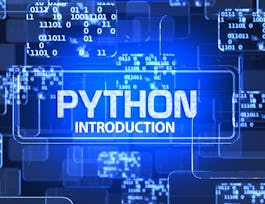Introduction to Financial Engineering and Risk Management course belongs to the Financial Engineering and Risk Management Specialization and it provides a fundamental introduction to fixed income securities, derivatives and the respective pricing models. The first module gives an overview of the prerequisite concepts and rules in probability and optimization. This will prepare learners with the mathematical fundamentals for the course. The second module includes concepts around fixed income securities and their derivative instruments. We will introduce present value (PV) computation on fixed income securities in an arbitrage free setting, followed by a brief discussion on term structure of interest rates. In the third module, learners will engage with swaps and options, and price them using the 1-period Binomial Model. The final module focuses on option pricing in a multi-period setting, using the Binomial and the Black-Scholes Models. Subsequently, the multi-period Binomial Model will be illustrated using American Options, Futures, Forwards and assets with dividends.



Introduction to Financial Engineering and Risk Management
This course is part of Financial Engineering and Risk Management Specialization



Instructors: Garud Iyengar
Sponsored by IEM UEM Group
42,867 already enrolled
(254 reviews)
Recommended experience
Skills you'll gain
Details to know

Add to your LinkedIn profile
17 assignments
See how employees at top companies are mastering in-demand skills

Build your subject-matter expertise
- Learn new concepts from industry experts
- Gain a foundational understanding of a subject or tool
- Develop job-relevant skills with hands-on projects
- Earn a shareable career certificate


Earn a career certificate
Add this credential to your LinkedIn profile, resume, or CV
Share it on social media and in your performance review

There are 5 modules in this course
Welcome to Financial Engineering and Risk Management
What's included
1 video3 readings
Welcome to Week 2! This week, we will cover mathematical foundations that are necessary for the study of future modules. In a nutshell, we will introduce probabilities and optimization. The theory of probability is the mathematical language to characterize uncertainties, e.g. how to describe the chances that the price of a particular stock will go up tomorrow. To make things precise, we need probabilities. Optimization is a set of toolkits that allow us to search for optimal solutions. For example, given a budget constraint, how do we maximize the profit? We need mathematical optimization. Financial engineers apply probabilistic models to capture the regularities of financial products, and apply optimization techniques to optimize their strategies. These mathematical toolkits will serve as a cornerstone for your financial engineering career.
What's included
18 videos6 readings5 assignments
Welcome to Week 3! This week, we officially embark on the journey of financial engineering and risk management. We will start with the fundamentals of financial engineering, i.e. the principles of pricing. In financial markets, given a financial product, how do we calculate its prices? These pricing principles will serve as the cornerstone of our future modules. We will also cover the basics of fixed income instruments, which serve as the building blocks of financial markets. If you get stuck on the quizzes, you should post on the Discussions to ask for help. (And if you finish early, I hope you'll go there to help your fellow classmates as well.)
What's included
7 videos2 readings3 assignments
Welcome to Week 4! This week, we will cover a new family of financial products: derivative securities. Derivative securities, as the name suggests, are financial products that derive their value from some underlying assets, such as interest rates or stocks. The prosperity of modern financial markets is due in large part to the wide variety of derivative securities on the markets such as forwards, futures, swaps, and options as we will introduce in this module. We will also introduce the 1-period binomial model, a simplified framework that allows us to calculate the prices of derivative securities. Despite its simplicity, 1-period binomial model is the building block of more powerful pricing models as we will find out in future modules. As always, if you get stuck on the quizzes, you should post on the Discussions to ask for help. (And if you finish early, I hope you'll go there to help your fellow classmates as well.)
What's included
11 videos3 readings4 assignments
Welcome to Week 5! This week, we will continue from the last module, and extend from the 1-period binomial model to the multi-period binomial model. Multi-period binomial model is nothing but stacking multiple 1-period binomial models together. We will see how this simple construction allows us to price financial products over long horizons. As an illustrative example, we will price the American options using the multi-period model. Moreover, we will cover more advanced pricing models such as the Black Scholes model. We will see how the Black Scholes model is a natural extension of the multi-period binomial model and is widely applicable in practice. As always, if you get stuck on the quizzes, you should post on the Discussions to ask for help. (And if you finish early, I hope you'll go there to help your fellow classmates as well.)
What's included
10 videos7 readings5 assignments1 discussion prompt
Instructors


Offered by
Why people choose Coursera for their career




Learner reviews
254 reviews
- 5 stars
75.68%
- 4 stars
16.86%
- 3 stars
2.74%
- 2 stars
1.17%
- 1 star
3.52%
Showing 3 of 254
Reviewed on Jan 9, 2022
The course is interestingly challenging, and tough at the same time.
Reviewed on Feb 25, 2022
Really nice lectures and the lectures are easy to follow and lecture notes are very logically written with a lot of nice examples. Highly recommended for anyone who has solid math backgrounds.
Reviewed on Jul 28, 2024
Very informative and clear explanation once you survive the math in module 1
Recommended if you're interested in Business

Kennesaw State University

EDHEC Business School

University of Geneva

The University of Melbourne

Open new doors with Coursera Plus
Unlimited access to 10,000+ world-class courses, hands-on projects, and job-ready certificate programs - all included in your subscription
Advance your career with an online degree
Earn a degree from world-class universities - 100% online
Join over 3,400 global companies that choose Coursera for Business
Upskill your employees to excel in the digital economy


